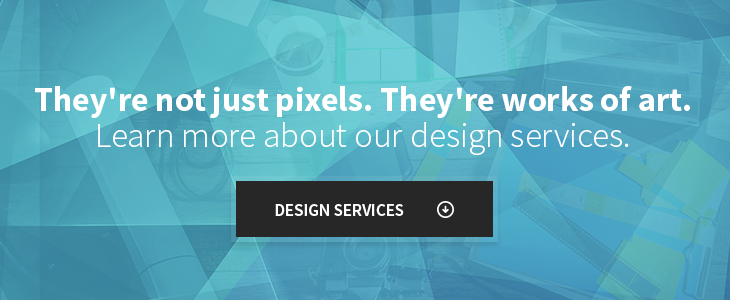
If you’ve ever visited a website and found yourself clicking a button to sign up for something or to visit a specific landing page, you have encountered a call-to-action. Yet perhaps you didn't think about what made you decide to click it versus not.
If so, the call-to-action did its job effectively. The best CTAs, after all, are ones that work organically without making themselves obvious. They fit right in with the surrounding content and design, and create an instant emotional reaction, usually on a subtle level.
Once you start analyzing what a CTA can do, you begin to see that they are often deceptively simple. No doubt you've looked at other CTAs and thought to yourself that plunking down a "Contact Us" or "Call Now!" button is easy enough. In reality, the designers likely put a significant amount of time considering everything from the size of the CTA to the color and position on the page.
These elements should seamlessly integrate into your full web design and content, not detract or distract form it. The Web is full of examples of effective CTAs.
Of course, your CTAs are ultimately going to differ depending on what type of business you're in and what your basic marketing approach is. But there are fundamental parts of any effective CTA that should always be considered.
The Size of Your CTA
How big your call-to-action is depends largely on what naturally fits with the rest of your design. While the point of a CTA is to draw attention and encourage people to click, you don’t want something so garishly large that the message comes across as desperate.
The format will also dictate the size. If you’re going for a banner-style CTA, it’s easier to get away with something fairly large and full-width. On the other hand, a massive, full-width, beveled button right in the middle of your page might be pushing it.
If your CTA is a combination of a button and a graphic, you will need to balance both so one doesn’t overpower the other. See, for example, any of our services pages.
The Color of Your CTA
Have you ever noticed how many CTA icons are green, orange, or red?
There's a good reason for that. Those colors generally inspire more energetic feelings that work on a psychological level to compel action. It's why you generally won't see more relaxing colors on CTA buttons, even if it all depends squarely on the entirety of your design.
It should be noted that the CTA we included above is blue, which could be considered one of these relaxing colors. But our primary branding color is orange, so the contrast is still there, albeit inverted.
If you join the pack and use green, orange, or red, you need to make sure it contrasts well with your surrounding design so it doesn't look out-of-place. That's why you have to integrate your CTA in with your initial design so you carefully use the right color.
Testing also plays a huge part in this aspect of an effective CTA. It’s easy to guess what color might work, but you never know until you can measure it in action. A/B testing is particularly effective for this—display one color to half of your visitors and another color to the other half, and measure which option ultimately generates the highest click rate over time.
Using the Right Words on Your CTA
When you pay more attention to the details of any CTA, you'll see that most of them have their own use of words. Not all of them just say "Contact us."
Most experts say any action verb that tells you how to get from one point to another is the best approach. Words like "Start", "Join", or "Discover" are excellent words that inspire curiosity. Even negative words can inspire action to help eliminate a personal problem.
The more personal you can make your wording, the more of an emotional effect you'll create. Selling products is always about solving a problem, so let the customer know you want to solve it for them immediately.
Placing Your CTA
Where you place your CTA is always a point of argument for many experts. You could follow those who say Fitt's Law fits into the picture, where a CTA goes in the path of the user. This means going simply by logic on where the CTA best fits within your content.
A professional web designer can help you with a more intuitive approach to CTA placement, and build it into the actual design of your site so that it’s natural. They'll help you realize user anticipation, whether that’s at the end of a blog post or above the fold on your homepage.
Anyone with a product or service to sell counts on their website to convert, and convert well. Without a sense of what action to take next, a potential customer might wander away, never to return. By using effective, attention-grabbing calls-to-action to guide them toward the actions you want them to take, you can optimize your website for sales and increase your conversion rates significantly over time.



